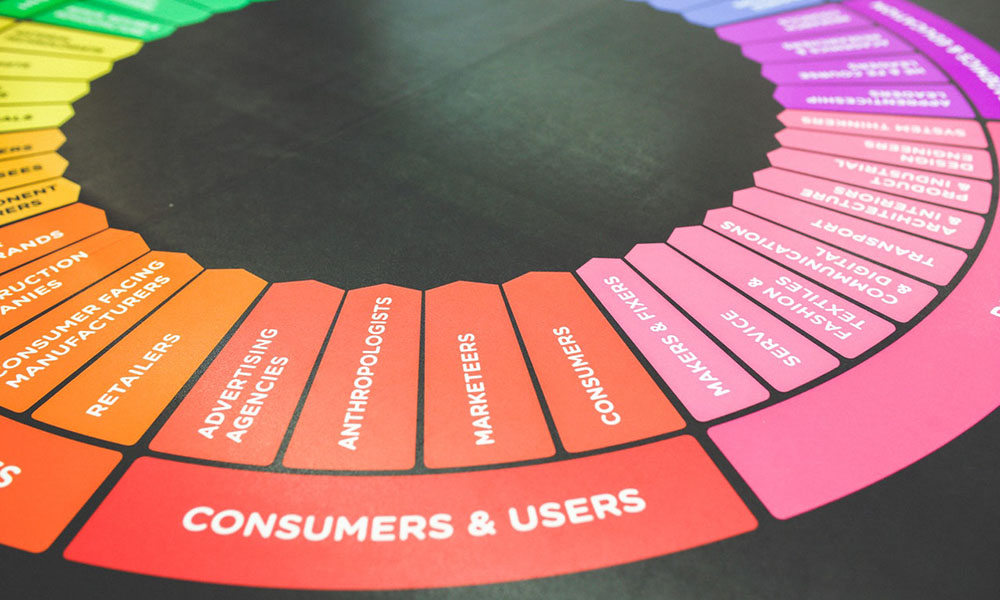Food trucks need to have financing and a place to start their operations. A good place to start is to create your own food truck business plan. New business owners, or aspiring owners, very rarely realize that business plans are for more than financing.
Yes, lenders will want to have a business plan in place, but a business plan is your blueprint to success.
It's this plan that you follow to success. Changes may be made over time, but when created properly, starting a food truck business plan will be able to guide you through everything from sales and marketing to understanding the needs of your demographic.
The plan can also include information for everything, from equipment and documentation to the pain points of potential customers.
While there may be more points required in your food truck business plan, we'll do our best to help you get started with a plan for success.

Business plans are in-depth, and they will include a few major points. You'll want to alter the plan to meet your needs, but the basic points that will be included are:
Executive Summary
An executive summary is the first point to cover. When writing an executive summary, you're writing an introduction to the "plan's reader". This is the person that will glance at your plan, whether it be a lender or yourself in the future.
You'll be working on highlighting your company's purpose and how you expect it to grow and become a success.
I recommend writing the executive summary at the end. Why? You'll have already written all of your other sections, making writing the summary even easier. The executive summary will include a few of the following points:
-
Food you plan to offer to customers
-
The place where the food will be sold
-
Why the food was chosen and why this food is needed in your area
-
Projected costs and profits of the business
-
Future goals of the business if it succeeds
You'll want to outline the need or opportunity of the business, your target market and briefly outline your marketing and sales strategy. You'll also want to be able to outline your competition as well as your plan for implementation.
There's a lot that goes into an executive summary, and since it's the first introduction to your business that a lender will see, you need to make it a thorough, concise part of your plan.
Company Description
Following the executive summary is the company description. The company description is your chance to go much more in-depth about your truck's role in the community, and the overall purpose of your truck.
If you have any special aspects about your truck, this is where you'll put them.
For example, your truck may:
-
Offer healthy food alternatives
-
Source food from only local growers
-
Provide to a market that is underserved
You'll use the description to discuss your target market and plans that you have to win your target market over. This section should provide clear and concise information on:
-
What you plan to do to grow your business
-
How you'll make your food truck "work"
-
How your truck will offer something unique or different
Once the company description is written, it's time to move on to one of the most important parts of the business plan: business operations.

Business Operations
Business plans tend to reiterate information over and over again, and you'll have already discussed some of your operation plans earlier in the plan. But in this section, you'll be describing your plans in much greater detail.
Every business plan for a food truck must include business operation information, such as:
-
Operating hours. Your operating hours must be listed, and you'll also want to include any special operating events or hours. If you plan to operate on Thanksgiving, for example, this is a special occasion that should be listed in your business operations section.
-
Describe your operations. Again, you'll want to describe your business' operations. Will you be delivering hot and cold food? What type of setup will you have? Will you be driving into industrial parks, or will you be stationed in one location where your customers know to find you? All of this information is essential to running your food truck, and it must be included in this section.
-
Location. If you plan to stay in a static location or drive around to industrial areas, you'll need to mention this in your plan. Go the extra mile and use maps to indicate your stops and service areas.
-
Employee information. There may be employees at first, or there may not be. Running an operation with employees means that you need to include all positions, duties and expected hours of employees. Any additional help you foresee needing in the future should be listed, too.
-
Food items. Finally, you'll need to have food items listed and dishes you plan to serve. Key ingredients and sources for food you plan on using should also be listed.
Be thorough with your business operations section, and even list any special catering you may offer or events that you'll service.
Market Analysis
A research-heavy section, your food truck business model will be based on market analysis. This is where you'll explain why you're entering the food truck market, trends in the industry and why you believe that your venture will be a success.
You want to be very thorough in this section because it's the section that will show why your food truck will succeed.
This section will include information on:
-
Industry and audience. This section will require you to do in-depth research, and meeting with your local chamber of commerce may suffice. This will allow you to better understand the local industry. You'll also want to see what opportunities are available, such as large companies to serve or tourist sites. Information will also include: festivals where food trucks may be desirable, food truck venues, construction projects that may require a food truck or even traffic patterns.
-
Competition and roadblocks. You need to know what you're up against in the market. This means local restrictions and regulations that may exist in the market. Information on competitors, including pricing and products they offer, should also be listed. It's important to thoroughly list all of your roadblocks and competition so that the plan is detailed and accounts for all issues you may come across.
Market analysis may require you to access local records, and the chamber of commerce or your local library may have access to statistical information in your area that can be helpful.

Marketing and Sales
You have written a major portion of your food truck start up business plan so far, but now is the time that you'll need to discuss how you'll market your business and make sales. Of course, the exterior of your truck is a promotion in itself, and you'll want to have the exterior "explain" what you'll be offering.
For example, a local food truck has pictures of tacos and other food items on the side of the serving windows so that potential customers know what food items they offer.
But your promotion will need to go much more in-depth than the exterior of your truck.
You'll also need to strategies of promotion, which may or may not include:
-
A robust website that lists all of your delivery locations, menu items and prices.
-
Chamber of commerce directories are another outlet to promote on.
-
News outlets, especially when the truck is first opening, will be a good source of promotion.
-
Social media is a great outlet now, too. What will you do on social media to promote your brand? Will you use Instagram, Facebook or other online mediums to connect to customers?
-
Local events are huge, and these events will be a go-to option for many food trucks. Outline the events you'll be a part of, and also list any strategies you'll use to market yourself, such as sponsoring a local baseball team.
Marketing is just part of the equation. You also need to be able to make sales to turn a profit. A food truck is not a viable business unless sales are made.
Key points of the sales portion of the article will include a variety of different information, such as:
-
How many sales, on average, will need to be made to keep the truck in operation? This will be the sales needed to cover the overhead of the truck,
-
How many sales will be made to turn a profit? This will be how many sales you hope to make to provide a profit.
-
The average price or cost of dishes so that you understand how many items must be sold to turn a profit.
-
Operation hours and days when you'll have your truck open and trying to make sales.
You need to make sure that this section, the sales section, includes figures and statistics. All of this information will be vital to your truck's success, and they'll also be very important for keeping your business on track to reach its goals.
Management and Ownership
Every food truck business plan template will include a management and ownership section. An important section of every business plan, this is the section where you will detail who manages and owns the business.
This section will include:
-
The structure of the business and key roles that are required to make the business a success.
-
Profit division, and how profits will be divided, especially if there are multiple partners in the business.
-
The person that is in charge of the business' operation.
-
Key qualifications and skills each team member will bring to the team.
The management and ownership section is important because it will be used to demonstrate the skills and qualifications of team members. For example, when trying to secure financing, you'll strengthen your case if the owner of the business has skills relating to:
-
Management
-
Restaurant work
-
Cooking
Banks would much rather back someone with experience in the field over someone with an ambitious goal of starting a food truck.
Other key factors that may be touched on in this section are:
-
Owner or management past experience with starting a business
-
Compensation for all parties
-
Capital that each person, or financial assets, that each person brings to the table
-
Attorney or accountant information
-
Percentage ownership of any partners or co-owners
You'll want to be very specific in this section of your food truck business plan. if you make this a strong section of your business plan, it may mean the difference between receiving funding or not.

Financials
There are startup costs with every business, and the financials section is the one that any interested investors will flip to first. Why? If a business plan isn't financially viable, it's not worth the time pursuing for investors.
You'll want to include in-depth financial information on the following:
-
Vehicle costs
-
Operation costs
-
Rental costs
-
Costs for licenses and incorporating
-
Insurance costs
-
Supply and equipment costs, including a full breakdown
-
Employee costs
-
Intangible costs, such as food loss, returns and other expenses that may occur
Now, you'll also need to come up with your food truck sales projections, and this will be broken down into monthly and quarterly costs. These projections will allow you to provide a projection of your truck's first year of operation as well as the following:
-
Income
-
Costs
-
Losses
You'll want to provide one-year of projections. It's also smart to provide projections for the second year of operation.
It's possible to provide projections for 3+ years, but it's still too early to do this. Instead, you'll want to spend a good amount of time trying to research and provide a general outline of your first two years of financials.
Investors, or lenders, want to know how much money you'll be making and losing.
You'll learn a lot about the business after your first year of operation, so you'll have a much better time coming up with future projections after your first year or two of operation.
Financials are very important, and a lot of time must be dedicated to this section. If you take out a loan that's too small to cover costs, you may run out of finances mid-year due to your projections.
Account for as much costs as possible to really see what you might be able to expect from your sales.
Minimum and maximum sales should be considered, too. This way, you'll be able to show that you may be able to make $100,000 on sales, or $300,000 in sales. If you're able to subsist on $100,000 in sales but you earn more, then it's a business that will be more profitable. But if you project sales that are too high, you risk running out of money.
Funding
If funding is something you'll be considering, then you'll want to include a funding section. This is a section that will include the basics that lenders need to know, such as:
-
Total amount of funding to start the business
-
Funding needed to upkeep the business
-
How money will be spent
-
How you plan to repay the loans
You need to be clear and concise, and It's essential to write a plan on how you'll repay your loan. This will provide you and lenders with a good understanding of how and when you plan to repay loans.
Investors will need to know why they should invest in your business, so this is the time to explain the returns and benefits that the investment will offer to the investors.
But there are plenty of food trucks that are self-funded, so you may not need to have investors at all. This means you get to maintain full control of the business and will benefit more from the truck's growth as a result.
Growth and Development
Coming to the near-end of the business plan, you will want to start thinking of the growth and development of the business. This will be a long-term plan that may stretch 2 - 10 years, and it's a plan that may help dictate the future of your food truck.
Growth and development also shows that you have a long-term commitment to your food truck.
Perhaps you plan on expanding to a second truck in two years, catering to another school or industrial park.
Maybe you'll reinvest profits from the first two years into hiring a manager to operate the truck for breakfast, offering a new stream of income.
All of this will help strengthen your business plan and attract investors.
Appendix
The final part of the business plan is the appendix, and this is where you'll be placing any other documentation or materials that may be relevant to the reader. What you may include in this section is:
-
Food menu
-
Licensing documentation
-
Legal documentation
-
Design concepts
-
Pictures of the food truck
-
Permits
Statistical information should also be included along with references, all of which will make your business plan more thorough and complete.
Now, it's time to finish up your business plan with a nice folder and presentation.
Remember, this plan is as much for investors and financing as it is for you to run your food truck.
Learn more on how to manage a food truck business:
- Food Truck Equipment: Items Every Food Truck Needs To Operate
- Food Truck Business Profits Vs Operational Costs
Commercial Equipment: Quote and Advice
Get professional advice and estimates on the necessary equipment as well as a list of supplies needed to start a restaurant.
Richard
tel: 718-369-0600
richard@mcdonaldpaper.com


